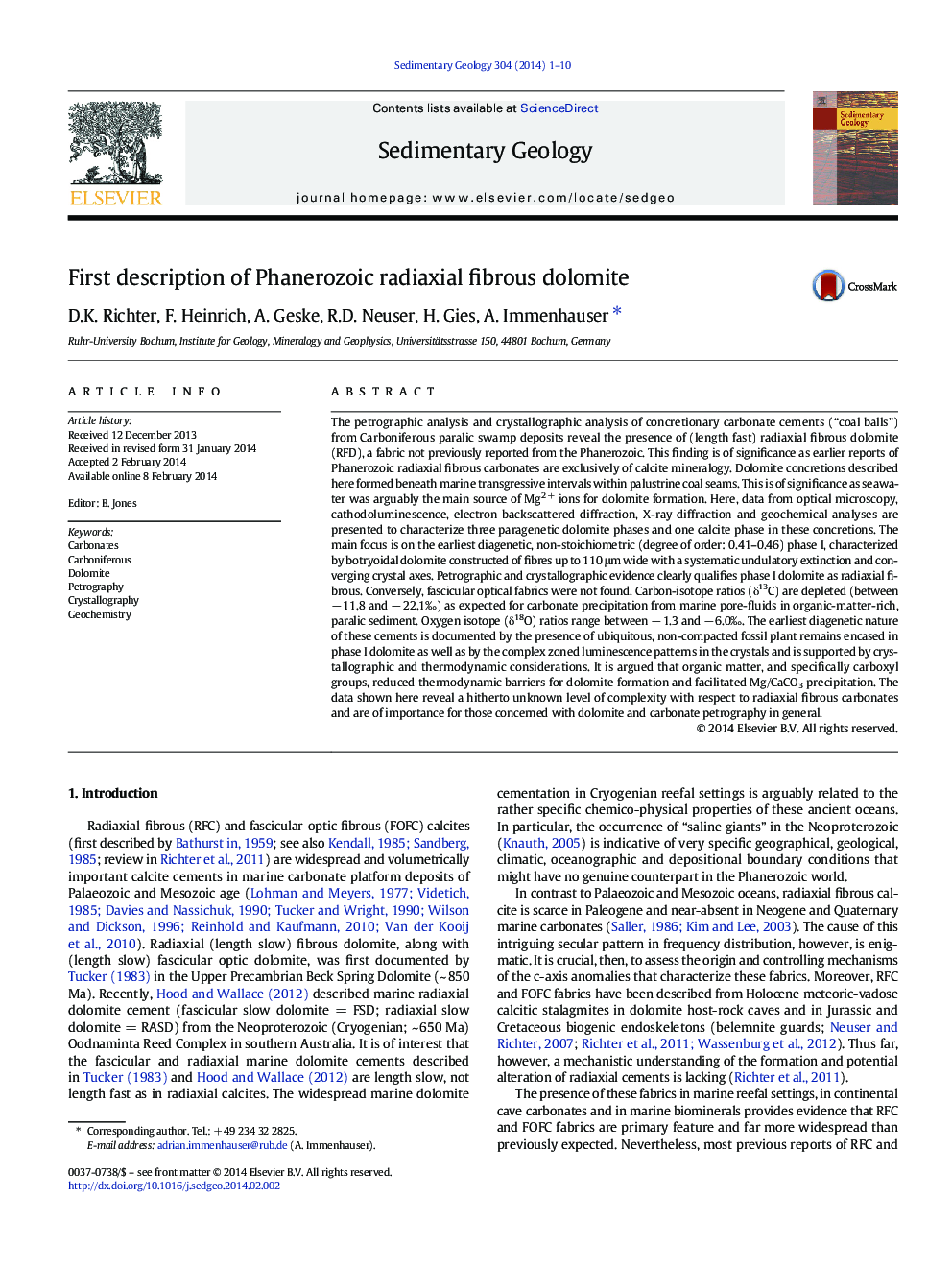| کد مقاله | کد نشریه | سال انتشار | مقاله انگلیسی | نسخه تمام متن |
|---|---|---|---|---|
| 4689436 | 1636059 | 2014 | 10 صفحه PDF | دانلود رایگان |
The petrographic analysis and crystallographic analysis of concretionary carbonate cements (“coal balls”) from Carboniferous paralic swamp deposits reveal the presence of (length fast) radiaxial fibrous dolomite (RFD), a fabric not previously reported from the Phanerozoic. This finding is of significance as earlier reports of Phanerozoic radiaxial fibrous carbonates are exclusively of calcite mineralogy. Dolomite concretions described here formed beneath marine transgressive intervals within palustrine coal seams. This is of significance as seawater was arguably the main source of Mg2 + ions for dolomite formation. Here, data from optical microscopy, cathodoluminescence, electron backscattered diffraction, X-ray diffraction and geochemical analyses are presented to characterize three paragenetic dolomite phases and one calcite phase in these concretions. The main focus is on the earliest diagenetic, non-stoichiometric (degree of order: 0.41–0.46) phase I, characterized by botryoidal dolomite constructed of fibres up to 110 μm wide with a systematic undulatory extinction and converging crystal axes. Petrographic and crystallographic evidence clearly qualifies phase I dolomite as radiaxial fibrous. Conversely, fascicular optical fabrics were not found. Carbon-isotope ratios (δ13C) are depleted (between − 11.8 and − 22.1‰) as expected for carbonate precipitation from marine pore-fluids in organic-matter-rich, paralic sediment. Oxygen isotope (δ18O) ratios range between − 1.3 and − 6.0‰. The earliest diagenetic nature of these cements is documented by the presence of ubiquitous, non-compacted fossil plant remains encased in phase I dolomite as well as by the complex zoned luminescence patterns in the crystals and is supported by crystallographic and thermodynamic considerations. It is argued that organic matter, and specifically carboxyl groups, reduced thermodynamic barriers for dolomite formation and facilitated Mg/CaCO3 precipitation. The data shown here reveal a hitherto unknown level of complexity with respect to radiaxial fibrous carbonates and are of importance for those concerned with dolomite and carbonate petrography in general.
Journal: Sedimentary Geology - Volume 304, 1 May 2014, Pages 1–10
